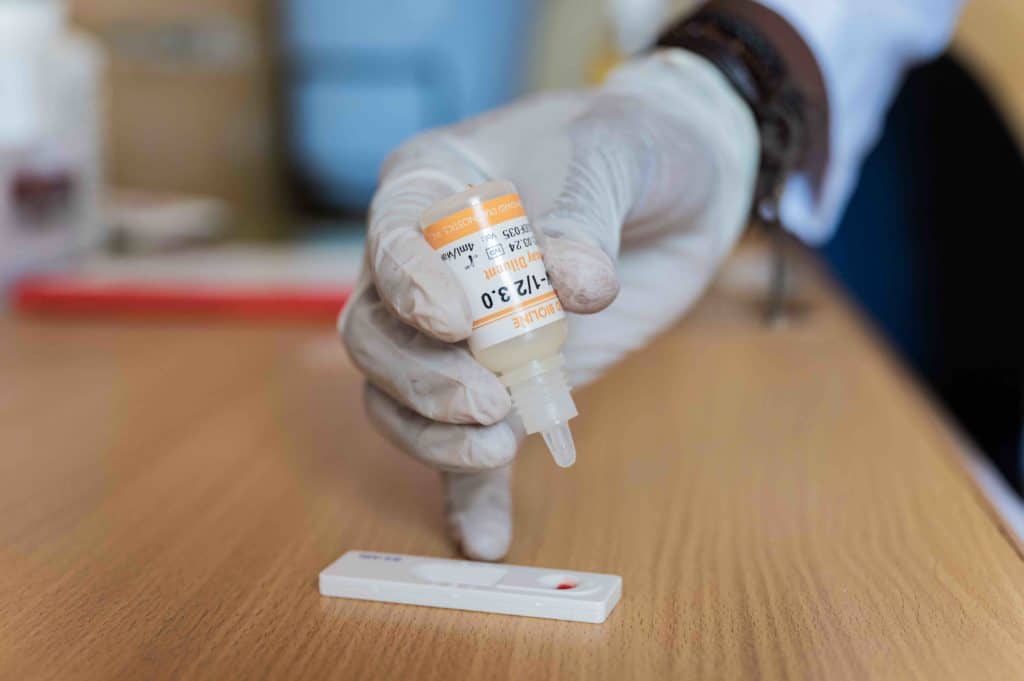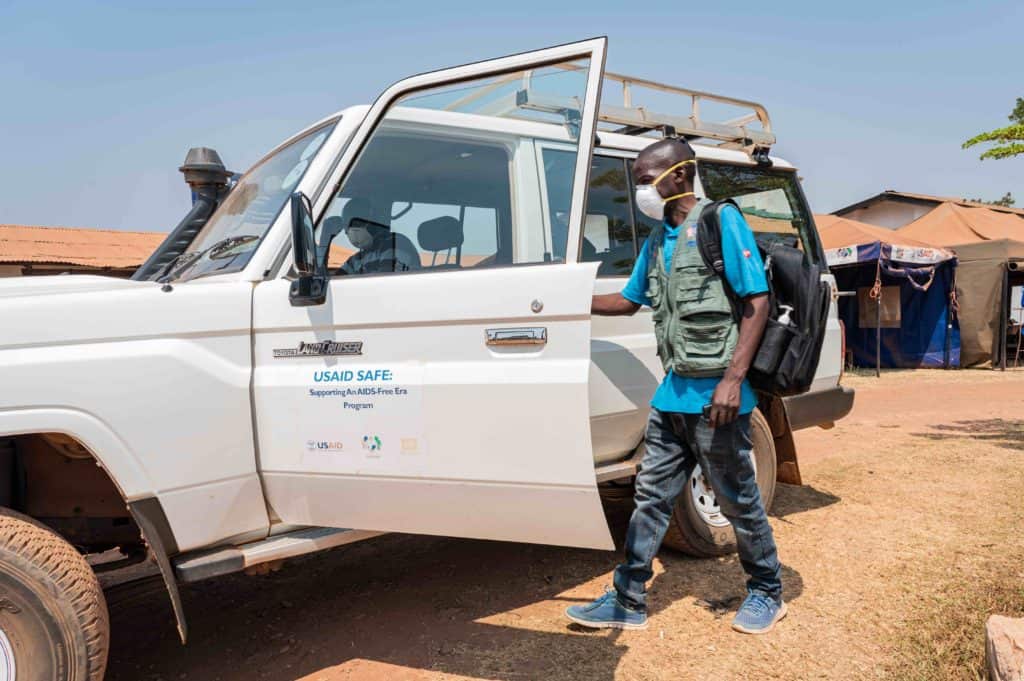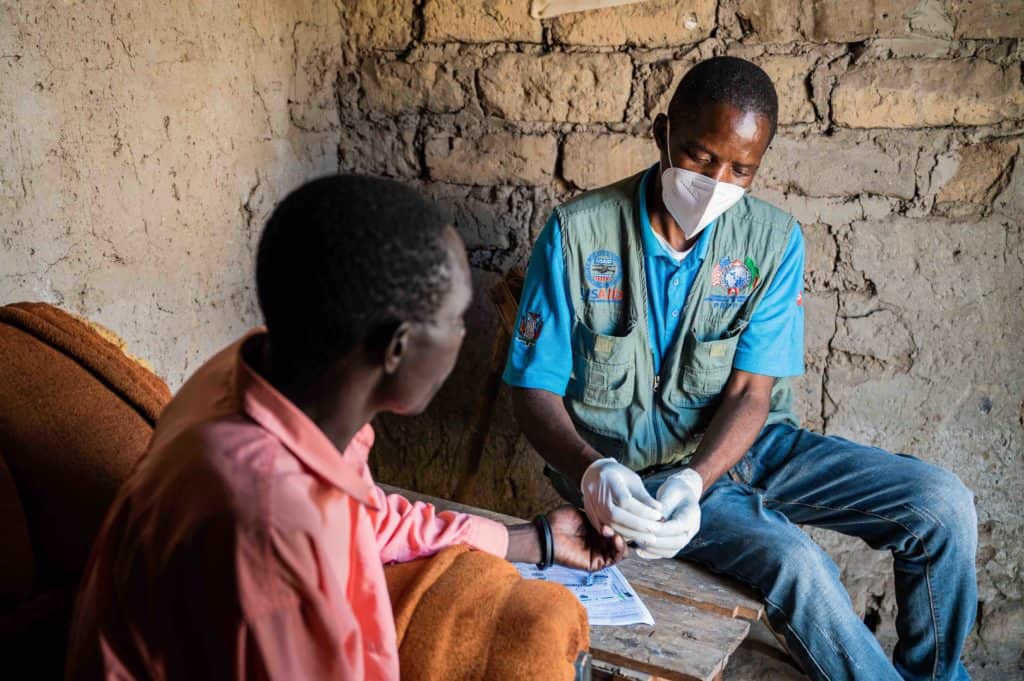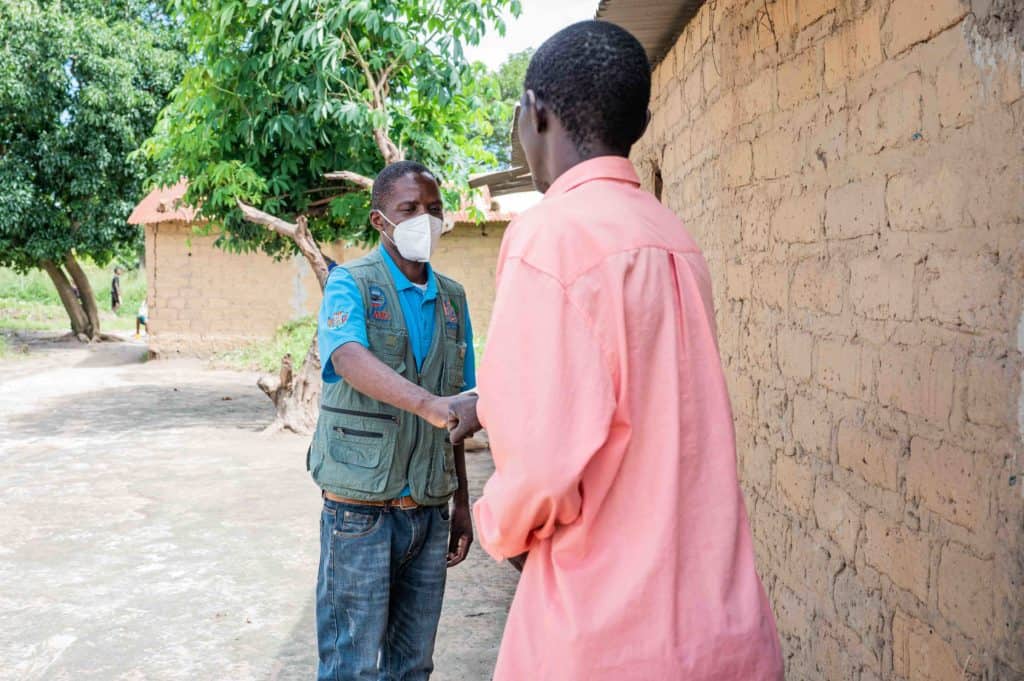This website uses cookies so that we can provide you with the best user experience possible. Cookie information is stored in your browser and performs functions such as recognizing you when you return to our website and helping our team to understand which sections of the website you find most interesting and useful.
Sara is a tailor who runs a home business that produces women’s attire from bright, African chitenge fabric. The 37-year-old mother, who lives in Zambia’s Northwestern Province, expresses apprehension as a clinician draws a blood sample to test for HIV. The clinician reassures Sara that, as they discussed during pre-test counseling, it is much better to know one’s HIV status than not.
The USAID Supporting an AIDS Free Era (SAFE) project is at the frontline of the national HIV response in Zambia. In support of the Ministry of Health’s goal to reach epidemic control by 2030, USAID SAFE uses index testing, for which providers ask people with HIV for the names and contact information of people in their lives who are at high risk of HIV, such as sexual partners and biological children. Staff then locate those people and offer HIV testing. Those who test positive are connected to care and support services, while those who test negative are referred for prevention services. Since its start, USAID SAFE has recruited, trained, and mentored HIV index testing staff in 302 health facilities in Zambia. In its fourth year, the project index tested 51,597 people, 12,496 of whom tested positive and began antiretroviral therapy (ART).

The clinician uses a rapid test to analyze the sample for HIV antibodies. HIV rapid test kits produce results in fewer than 30 minutes, allowing people to get their results in person during the same appointment. In its fourth year, USAID SAFE distributed 352,702 HIV rapid test kits to 302 health facilities.
Sara’s test is positive for HIV. A trained counselor answers questions, reassures Sara, and links her to ART. As part of index testing, the counselor encourages Sara to disclose her sexual contacts and biological children so that they too can be tested for HIV and access life-saving ART. The counselor reminds Sara that sharing contacts is voluntary and will not affect her access to care.
Harrison, a USAID SAFE-trained community-based volunteer (CBV), is responsible for finding and making sure that index clients’ contacts visit the health facility for testing and start ART if necessary. “Consent and confidentiality are a very important part of my job,” explains Harrison. “By building trust, I assist index clients with the difficult task of disclosing their status to their partners and encouraging them to test.”

If the index client’s contacts are unable or unwilling to visit the health facility, Harrison travels to their communities and provides testing in their homes using HIV self-test kits. In its fourth year, USAID SAFE distributed 27,148 HIV self-test kits to 302 health facilities.
Harrison meets Simon, Sara’s partner, during a home visit to discuss and answer questions about HIV testing, care, and social support. USAID SAFE trains CBVs in psychosocial counseling, including assessing and managing the risk of intimate partner violence. In addition to helping a client come to terms with a positive result, CBVs assist them to disclose their HIV status to partners and family members, prioritizing index client safety at all times.

After obtaining consent, Harrison tests Simon using an HIV self-test kit. Harrison takes every precaution to protect himself and his clients, wearing surgical gloves and a facemask as part of HIV and COVID-19 infection prevention and control measures.
Simon’s HIV self-test is reactive. Harrison records details and schedules a clinic appointment, at which Simon will receive a confirmatory HIV test and if positive, start ART. In the weeks to follow, Harrison will visit Simon’s home several times for enhanced ART adherence counseling, a nutrition assessment, and psychosocial support. As Harrison leaves to attend to other clients in the community, Simon feels reassured and hopeful for the future.

Sara has also received these services and has come to accept her HIV status. “In the beginning, I thought that being HIV positive was the end of me, but now I know better. Thanks to USAID SAFE, Simon and I can live a long, healthy, and happy life. But only if we both continue to take our medication on time,” and, she adds, “he allows me to pick out our outfits!”
Photos by Jason Mulikita

